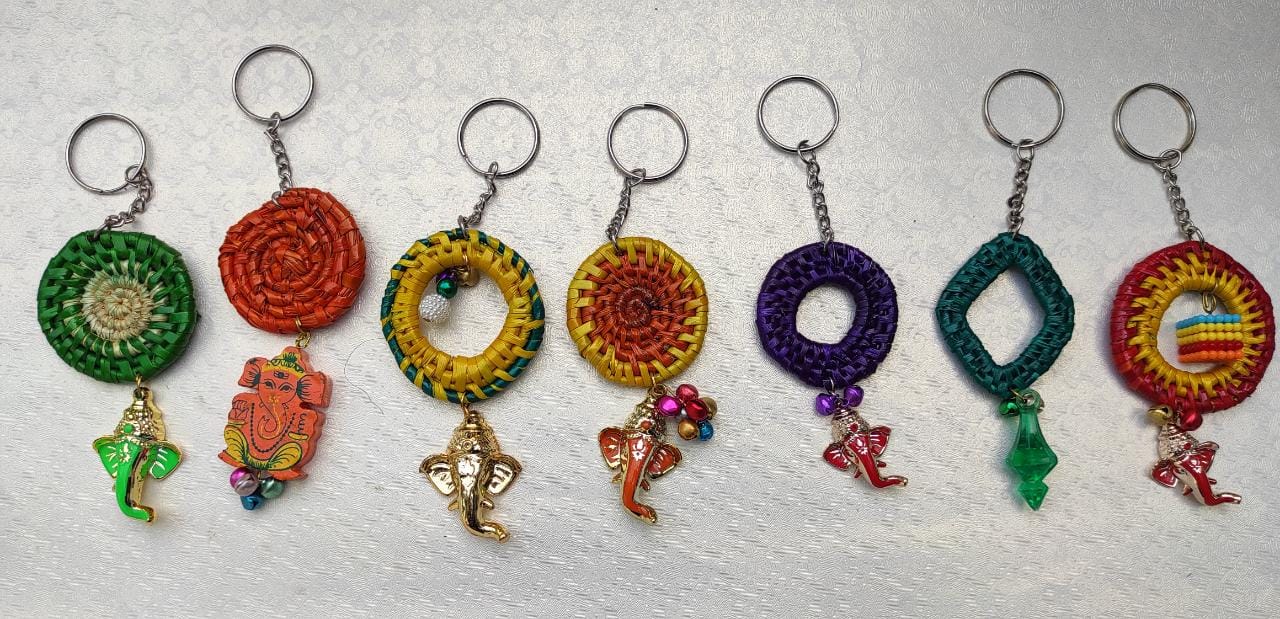Green Business
Bibi Fatima of Mahewa village in Chaka development block of Prayagraj, fashions beautiful, lightweight and eco-friendly jewellery like earrings, bangles and bracelets from Moonj. Moonj craft or the art of making baskets, stools, carry-bags and pen-stands etc from Moonj and Kaasa - wild grasses that abundantly grow near the banks of the river Yamuna and Ganga and in and around the vast areas of Prayagraj-- is nearly a century old. But, Fatima, 30, an intermediate pass and mother of two kids, has taken it to new heights and feels that given the digital push, the future is bright for such handcrafted work.
Q: When and where did you learn Moonj craft?
This is a craft that is traditional. It is handed down from one generation to another in rural families. I learnt this craft after marriage, from my mother-in-law and sister-in-law.
Q: How did you hit upon the idea of making something different?
At first, I was also making baskets and coasters like the other women in my family. But some time back, a training programme was organised by the government in which a designer suggested that we make attractive jewellery pieces. We tried our hands at it and adapted quickly to the idea. Since then, we are fashioning ear-rings and other hand-braided jewellery items.
Q: Did you face any obstacles in your venture? How did you overcome them?
Initially, there was difficulty in marketing. Earlier, we catered mainly to local markets. We also put up stalls at exhibitions etc., took orders on mobile and sent the ordered material outside via bus, as we were not allowed to go out. We loaded the order on bus, paid the driver and on reaching the destination, the customer offloaded the consignment. But gradually I began going out. Now there are 20 women in my self-help group. I display and market my creations on Facebook. I am also on Indiamart and Instagram which helps me get bulk orders. The demand is such that sometimes the orders have to be cancelled.
Q: How about earnings?
Every woman making such items earns a minimum of Rs 200-300 per day. Many run their houses with this income. With luck, they can earn a little more but since this is intricate work, it is not possible to do very much in a day.
Q: How are the jewellery pieces and other artefacts crafted?
The grass is cut, stalks peeled and the peels are left in the dew for some time. They are then dyed in bright colours and woven into patterns.
Q: What does the future look like?
The craft and people associated with it like me now have a distinct identity. There is new enthusiasm, as the craft is attracting not only customers but also media. The government is also providing fillip, under the ‘one district one product scheme’ (ODOP). I am trying to complete the formalities for GST etc., so that I can send the products to other states. The aim is also to find buyers abroad. So, the future looks good.
















Leave a comment